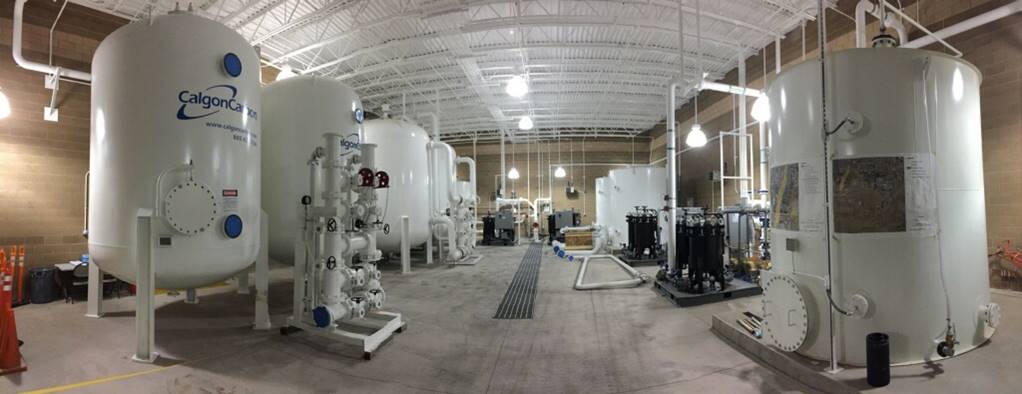Nearing spring in the year 2019, the Kirtland fuel leak is still a thing. It’s been about four and a half years since we dedicated a cover story to this particularly New Mexican tale where suburban sprawl meets the near-omnipotent military-industrial complex in a saucy hydrocarbon stew that causes cancer and reeks of high-test gasoline.My own personal notes on the coverage include the following: More than 10 years ago, discussion of the plume came up at Ridgecrest-centered neighborhood meetings with the US Air Force. The meetings were ostensibly about the loud noises and presumed mysterious activities—like in The Mist, you know—going on at the base late into the night.It turned out most of that was about a procedure called hot refueling and the Air Force basically told neighborhood association executives and Duke City Fix bloggers to eff off; they were the Air Force after all.The spill became big news a couple of years after that fateful, consumer-crushing encounter.Another time, when updating readers on progress, I did some research on citizen involvement in the fuel spill issue and subsequent clean-up procedure. Two years ago, New Mexico Political Report wrote that the Air Force informed authorities that interest in a citizen-led advisory board was practically nonexistent.Unsurprisingly, the mayor at the time, Richard Berry, went along with that assessment, as did county commissioner Maggie Hart Stebbins, which is an irony given her voting record on the environment. Of course the Water Utility Authority fell into line with those endorsements. Notably, Councilor Pat Davis proved his progressive cred by being on the side of citizens who deserve the power of inquiry by calling for the establishment of a Resoration Advisory Board.According to reporter Laura Paskus, “Restoration Advisory Boards, or RABs, allow local governments and citizens to become more involved in environmental restoration issues at U.S. Department of Defense facilities.”Anyway slow progress on remediating the spill continued for the duration of Berry’s tenure and the seemingly casual involvement of a Republican administration.But it’s a different world now. The election of a progressive mayor at the close of 2017 and a blue wave that washed over the rest of the state last November is prompting a reexamination of fuel spill remediation progress as well as the need for public involvement into that ongoing process.Starting a fortnight ago and continuing through April 8 at 5pm, the new-fangled, Democrat-powered New Mexico Environment Department is seeking public comment on its draft 2019 strategic plan that will address the legacy of contamination as well as current cleanup efforts.Environment Department Secretary James Kenney recently commented on the issue, telling media outlets, “Cleaning up the contamination at Kirtland Air Force Base remains a top priority at the New Mexico Environment Department.” The draft strategic plan details what actions we expect the Air Force to commit to undertake this year in remediating the contamination while protecting the health of the public.”In case you are interested a brief summary of this much needed, long-awaited plan, follows this brief political tangent, wherein we certainly assign blame to the slow as molasses when it comes to the environment approach taken by la Tejana and her followers (including ART mastermind Richard Berry) but also stop to notice the environmental damage done by the US military across the Land of Enchantment. Here in New Mexico, that comes down to millions of gallons of jet fuel and more than 3,000 atomic bombs, none of which are part of a vision of sustainability in any city.Well anyway, back to the plan. The good news is that the mass and footprint of the northern portion of the plume seems to be decreasing, due to the massive pumping efforts of the US Air Force, who have so far extracted and treated more than 585 million gallons of contaminated water. That water was used to irrigate the base golf course, but some was injected directly back into the aquifer. According to the feds, groundwater extraction and treatment is merely “an interim corrective measure.”Challenges with that aspect continue however as the local water table has risen in the past couple of years, flooding monitoring wells that will have to be replaced this year in order to provide accurate data about the location, size and intensity of the spill.The basic premise of the plan is to encourage robust monitoring efforts while continuing to extract and treat questionable groundwater. This program will be complemented by engaging a procedure that will test for contamination due to fuel vapor. The Air Force must have the vapor testing plan component available for action by May 20.All this is to be done while the city, state and federal government work in league with the community and citizens to design and deploy “multiple engineered technologies” capable of fully remeditating the site of the leak and its seepage into the local water system.The most important thing about the report is that it affirms the involvement of the public in this ongoing health and environment issue. Following the closure of public comment on the case, meetings will be held at the end of April, July and October to complete and publish the NMED’s Public Involvement Plan.At the end of the report, the environment department holds the USAF accountable, reckoning that “If USAF fails to adhere to its RCRA permit, it will be subject to enforcement action under NMED’s Hazardous Waste Act or other applicable provisions of law.”That’s a welcome change of tone that includes the spark of inclusivity, a thing which may help solutions to the other thing, a liquid monster lurking just beyond the nearest water faucet.
Send your comments on the plan by April 8 to:
Maddy Hayden, NMED Public Information OfficerEmail (preferred): maddy.hayden@state.nm.usMail: 1190 St. Francis Dr.Santa Fe, NM 87505





